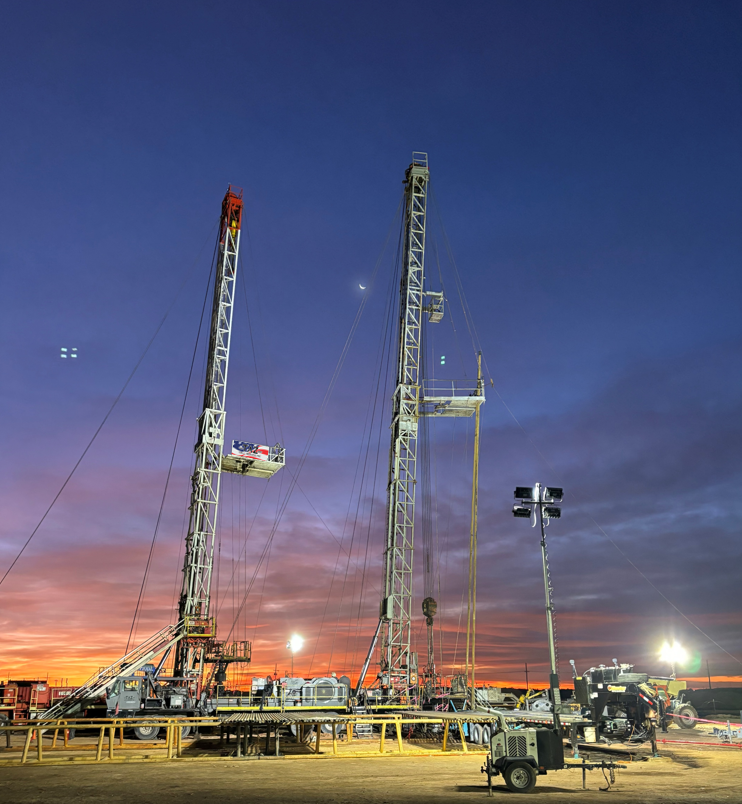As we continue into March, the oil and gas market is undergoing significant shifts due to a combination of geopolitical developments, market fluctuations, and ongoing trade policies. The latest economic and oil demand outlooks are shaped by key factors including U.S. trade tariffs, crude inventories, and broader market policy. For operators and service providers in West Texas, particularly in the Permian Basin, understanding these shifts is crucial for maintaining competitiveness in an ever-evolving environment.
Crude Oil Price Trends and the Impact of U.S. Tariffs
As tariffs with major U.S. trade partners are slated to go into effect Tuesday, oil prices have face continued volatility as the market remains uncertain about the potential impacts. Recently, oil futures saw a modest decline, with WTI crude settling at $68.62 per barrel, and Brent crude at $72.53. This decrease follows concerns about the economic impact of these tariffs, particularly as they could exacerbate supply disruptions and weaken oil demand.
In a February 2025 update, the U.S. Energy Information Administration (EIA) reported a 2.3 million barrel draw in U.S. crude stocks, highlighting a tightening in supply. However, this was offset by an increase of 3.9 million barrels in distillate fuels, a key indicator of refinery output. The EIA estimates U.S. crude oil production at 13.5 million bpd, with increases in crude imports (up by 98,000 bpd) helping to meet demand.
Impact of Tariffs on the Market: The ongoing trade tensions, particularly between the U.S. and Canada, are having ripple effects across the oil market. As Canada supplies a significant portion of U.S. crude, the tariffs imposed by President Trump have created additional uncertainty. The American Petroleum Institute highlighted that the U.S. refineries, particularly in the Midwest, depend heavily on Canadian crude for gasoline, diesel, and jet fuel production. The trade disruptions are expected to lead to higher costs for U.S. consumers, which will likely affect domestic pricing dynamics.
Economy at Large and Promises Made
President Trump’s first weeks back in office held much expectation for rapid economic improvement, with inflation, cost of living, and gas prices being central points of his constituents’ main concerns. Markets took a significant hit in late February as inflation numbers continued to rise year over year, suggesting the anticipated inflection point might take longer to reach than many hoped.
In terms of gasoline impact, a promise from the administration led many to believe that short term policy would revolve around providing cheaper gas to the average American. While short term tariff impacts suggest prices may temporarily increase due to supply shock, should that promise be kept, the price of oil will likely continue to decline to a level that has tangible effects in all stages of the value chain.
Takeaway for West Texas: Should oil prices fall, historical trends show that major producers will slow their operations when it comes to drilling and well maintenance. The independents, however, often use these periods to double down on their maintenance schedules while the cost of service and labor is cheaper, recouping the ‘buy low’ investment when oil prices rise again. Positioning workloads and service offerings to support those who view a lull in prices as a time of investment will allow service providers to remain competitive and agile even in ‘down’ market conditions.
BP’s Strategic Update and Broader Industry Trends
BP’s recent strategic reset reflects the broader industry’s shifting focus back towards oil and gas production. After years of ramping down green energy investments, BP is now focusing more on oil and gas, particularly in offshore fields and regions like the Permian Basin. The company’s new strategy includes increasing oil production to up to 2.5 million barrels per day by 2030, and reducing investments in renewable energy by over $5 billion annually.
This move reflects a broader trend where some of the world’s largest oil companies are recalibrating their energy transition strategies, aligning more with traditional oil and gas assets while trying to balance the need for sustainability.
What This Means for West Texas: For operators and service providers in West Texas, the shift in BP’s strategy signals that major players are increasing their focus on high-producing basins like the Permian. This presents both an opportunity and a challenge, as operators need to remain competitive by focusing on technological innovation, cost efficiency, and sustainability in their operations.
While investment into robust and standalone renewable energy appears to be declining, it is important to retain the perspective that ESG initiatives take shape in many forms, with major producers like BP still extremely sensitive to the optics and attention ESG sensitivity receives. Focus on ESG positive peripheral activity may be a way for service providers to differentiate themselves, utilizing equipment such as hybrid workover rigs that appeal to the producers’ need to be environmentally conscious, without diverting much of their own resources to enact those initiatives.
Looking Ahead: Market Outlook for March
As March unfolds, the market remains subject to significant geopolitical and market risks. The ongoing trade tariffs and global supply chain disruptions continue to weigh on pricing and production forecasts. However, the Permian Basin and West Texas remain central to U.S. production growth, with technological innovations and efficiency driving output in key sub-basins like Delaware and Midland.
Key areas to watch in the coming months include:
- Market Volatility: The ongoing uncertainty surrounding tariffs, particularly on Canadian oil, will likely keep prices fluctuating.
- Broader Economy: With the economy still yet to hit a defining turning point, continued attention should be directed towards the trickle down effects into the value chain.
- BP’s Strategy: BP’s shift toward more conventional oil production is an indicator of broader industry trends that could influence investment strategies across major oil and gas companies.
Final Thoughts
The oil and gas industry in West Texas faces an exciting yet uncertain year. While geopolitical developments such as tariffs create volatility, the Permian Basin remains a key growth area in the U.S. energy landscape. Operators and service providers must stay agile and responsive to these shifts, leveraging technological innovation and operational efficiency to succeed in an evolving market.
Stay tuned for next month’s update as we continue to monitor key trends and provide insights into the ongoing developments in the oil and gas sector.



